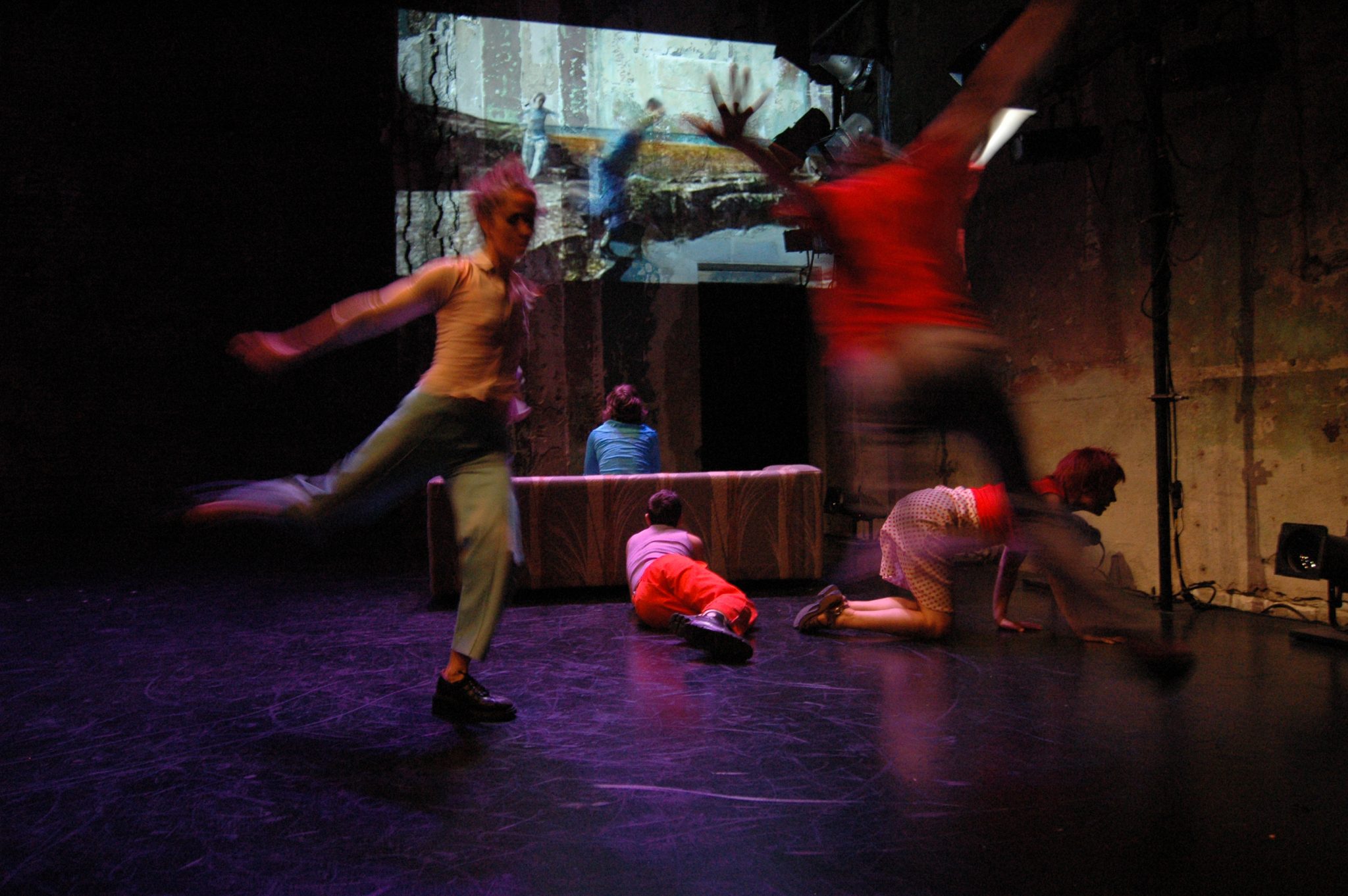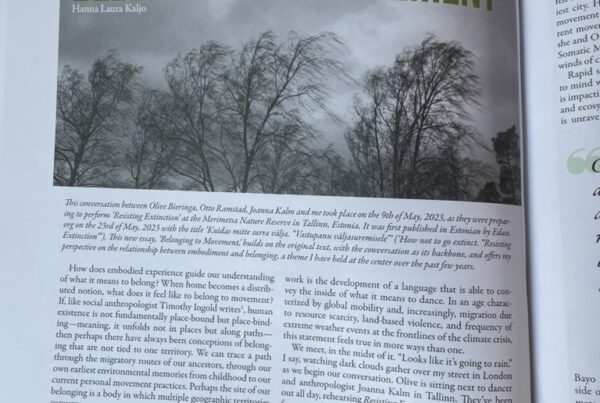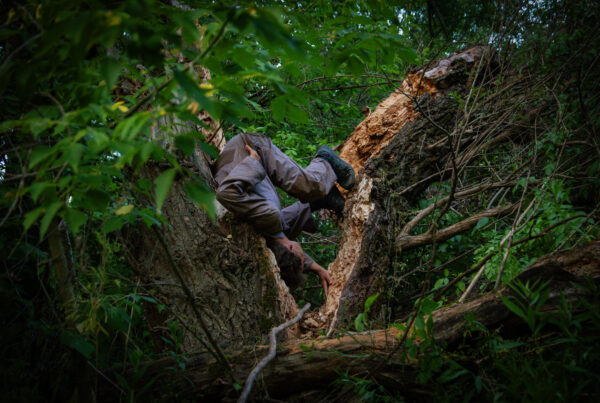author: Mary Hodges
date: 02/04/09
source: The Brooklyn Rail
Everyone is watching TV. Three performers sit in the front row of the audience, monitors on their laps, staring into the glowing screens. Two more lounge on a couch onstage, gazing up at projections of dancing bodies, running legs, or kitchen table snacking. One of the TV zombies wears the orange jumpsuit of an inmate.
This is the scene greeting the audience as they arrive for Holiday House. Presented by The Body Cartography Project, a ten-year-old dance company exploring movement and environment through video and live performance, Holiday House was offered as part of PS122’s annual COIL Festival in January. The work investigates the altered state of a holiday: how things change when there’s nothing that really needs to be done, when one’s normal routine is cast away. But this is not so much sweet relief as cabin fever. The dancers oscillate between jittery energy and slumped defeat, embodying the unfocused energy of recent retirees trying to acclimate to a new abundance of leisure.
At times this is funny: the awkward tension at a crowded dinner table is answered by dancers slapping utensils or citrus fruits on the tabletop, at first dramatically, one at a time, then with increasing chaos until all manner of kitchen items are spinning or falling or rolling, and dancers are grabbing and crawling and throwing, under the table, through the air. Laughter from the audience. More often, though, Holiday House is darker, and a touch spooky. Tim Glenn’s soundscape features barking dogs and sirens, soft electrical hums, and a glub-glub noise that seems to be coming from underwater and far away. Reality is different at the Holiday House.
The COIL version of this show is a couple of generations removed from its first manifestation. Originally a dance film, Holiday House has since been performed as a stage work and a site-specific piece in directors Olive Bierenga and Otto Ramstad’s home. For PS122, it has been modified again. Despite video projections of brick walls and chipping paint, intended to locate the piece in an actual house, the proscenium situation is overpowering.
It’s a shame that the specificity of place, supposedly a cornerstone of the dance, is diffused here. In exchange, however, we are treated to unobstructed views of a cast of extraordinary movers. Quicksilver Olive Bieringa attacks space with power and agility. Dustin Haug’s virtuoso duet with a red bicycle is reason enough to leave home on a cold night: frantically twisting the front wheel, Haug balances on the seat and jerks at the handlebars, then repeatedly crashes into the set while remaining upright. Later, Emily Johnson, a captivating noodle of a dancer, squiggles and flops into off-center shapes and curious positions, her partner Ramstad countering her movements.
In all, content may have overshadowed concept at PS122, but no matter. The dancing in Holiday House is at least as absorbing as any TV screen.
About the Author
Mary Hodges resides in Bushwick, Brooklyn, where she balances her interests in dance, books, and sustainable living.



